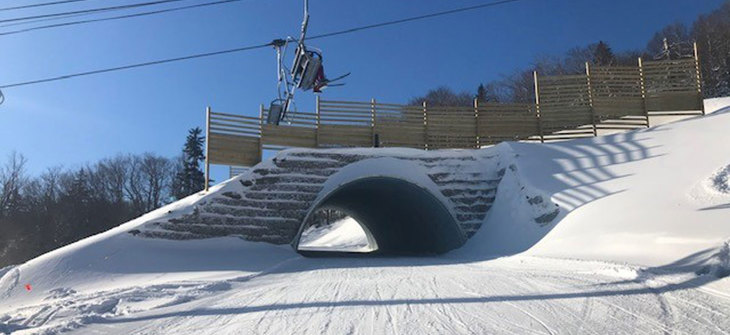
NOW THAT’S A STEEP SLOPE!
Skiers and children on sleds love a slope on a snowy day, while grounds keepers dread the slopes in mowing season. Slopes are part of our landscape, and we need to deal with them.
This applies to the design of a culvert installation as well, particularly when the slope is going across the culvert side-to-side, as opposed to being along the length of the culvert. A culvert requires balanced support on the sides in order to keep it stable. Corrugated pipes are designed to carry near-uniform loads, and having an unbalanced situation may result in deflection that leads to unwanted deformation, and the pipe’s integrity being compromised. Would you do better holding a 10 pound weight above your head with your left hand and a 5 pound weight with your right hand, or holding a 15 pound box with both hands?
Also, a culvert becomes a void form, which may reduce the stability of the backfill near the toe of the slope. A relatively small amount of soil on one side will have a difficult time supporting the load from the other side!
There are guidelines to address limitations for the slope, and they are related to the size of the culvert, the amount of backfill covering it, and whether or not the slope is constant across the culvert. A slope may be steeper at a distance away from the sides of the culvert if it is relatively level across the top and nearby sides. Proper choice of backfill material and its compaction is also key to a successful installation. Also, ensure that the finished grade does not erode. We want the kids to have a smooth sled ride, and we want the culvert to stay stable!
Finally, seriously consider shaping or warping the grading contours if possible so that the slope is minimized and balanced support is provided for stability.
Happy skiing!
